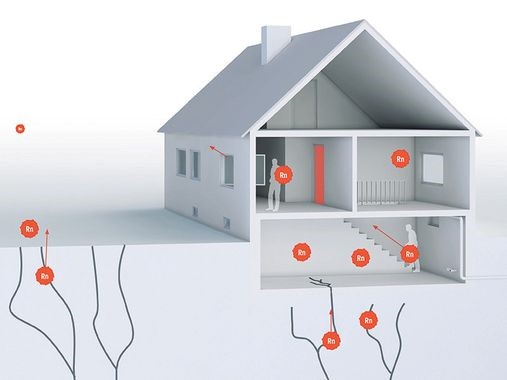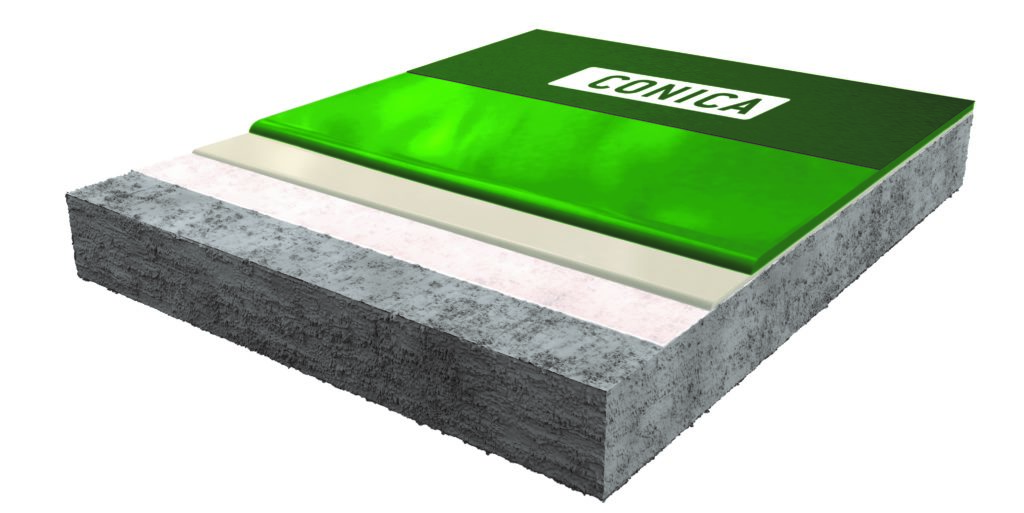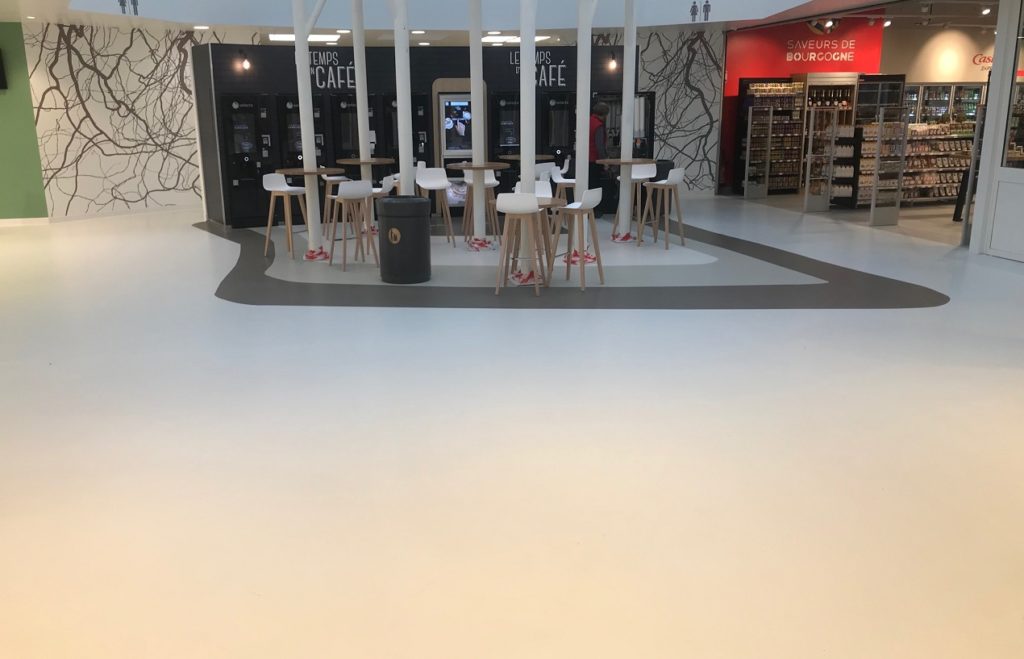CONIFLOOR IPS – protection from indoor radon
20. Dicembre 2021
In 2013, the European Union already adopted the Directive 2013/59/EURATOM of the Council of 5 December 2013 laying down basic safety standards for protection against the dangers arising from exposure to ionising radiation, and repealing Directives 89/618/Euratom, 90/641/Euratom, 96/29/Euratom, 97/43/Euratom and 2003/122/Euratom, a catalogue of measures for protection against indoor radon and the resulting health risks.
Radon is a natural noble gas that is found everywhere in the environment, with higher concentrations in regions with granite and lime deposits. The gas penetrates from the subsurface through cracks, joints and non-gas-tight ducts into buildings, where it accumulates. To a small extent, the gas can also get into buildings from building materials and from drinking and service water – where Radon can cause lung cancer.
The gas can propagate into all rooms. The concentration is generally highest in the basement and on the ground floor. The radon concentration usually decreases on higher floors because the radon penetrating from the building underground mixes more and more with low-radon outside air on the higher floors.

Naturally occurring radon gas can penetrate the building through cracks in the floor slab,
wall penetrations and the like.
Image source: Federal Office for Radiation Protection (D)
Depending on the region, the risk of radon from the subsurface is higher or lower, and, in future, structural measures to reduce the risk of radon will be mandated by the health authorities or offices for radiation protection. This applies, for example, to common rooms and classrooms in schools and kindergartens, but also to commercial workplaces if there is a risk that the recommended maximum limit values of 300 Bq/m³ may be exceeded.
The CONIFLOOR IPS coating system was tested, based on static crack-bridging, low-emissions polyurethane resins, at the laboratory for radionuclide analysis and radiological reports, IAF Radioecology (Radeberg), using recognised measurement methods, and the corresponding radon-tightness was confirmed.
CONIFLOOR IPS was tested in a total layer thickness, including an epoxy resin primer of 2.0 mm, and is characterized by additional static crack bridging of up to 1.4 mm (EN 1062-7) at 23°C. It was also tested to the strict requirements for TÜV Proficert Interior PREMIUM and is externally monitored as a low-emissions building product.
CONIFLOOR IPS can, amongst other coating systems based on polyurethane resin, be used in industrial, decorative or sports flooring as a radon-proof coating

1. Primer
2. Self-smoothing coating

Thus CONIFLOOR IPS prevents and reduces radon diffusion in basement floors and living areas above in new buildings, but also in existing buildings during expansion and renovation work. You can get the relevant certificates on request from your sales advisor or our customer service in Schaffhausen.
